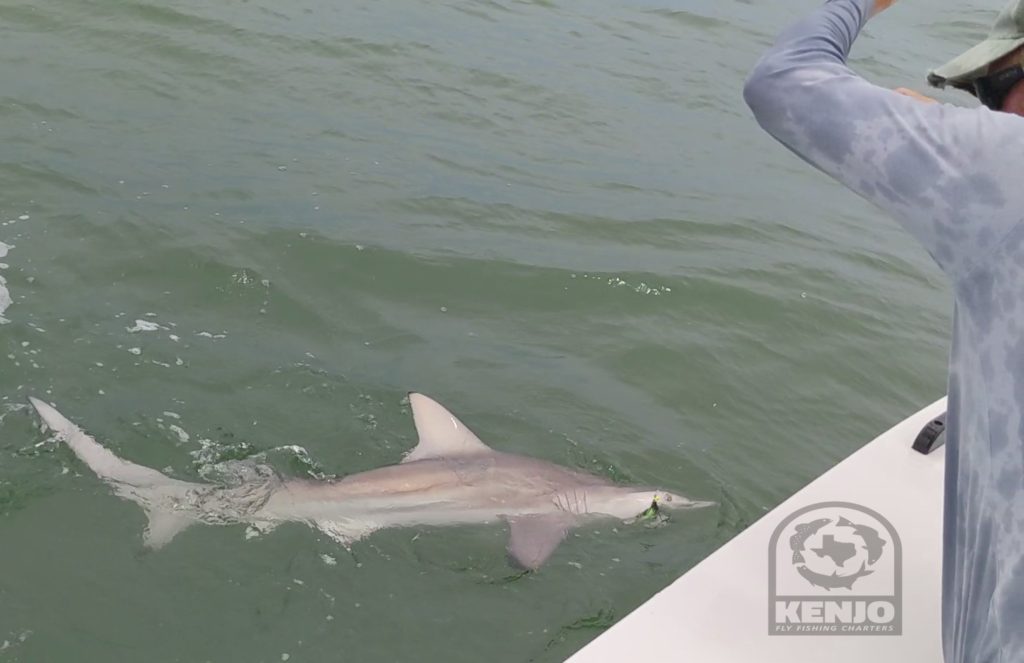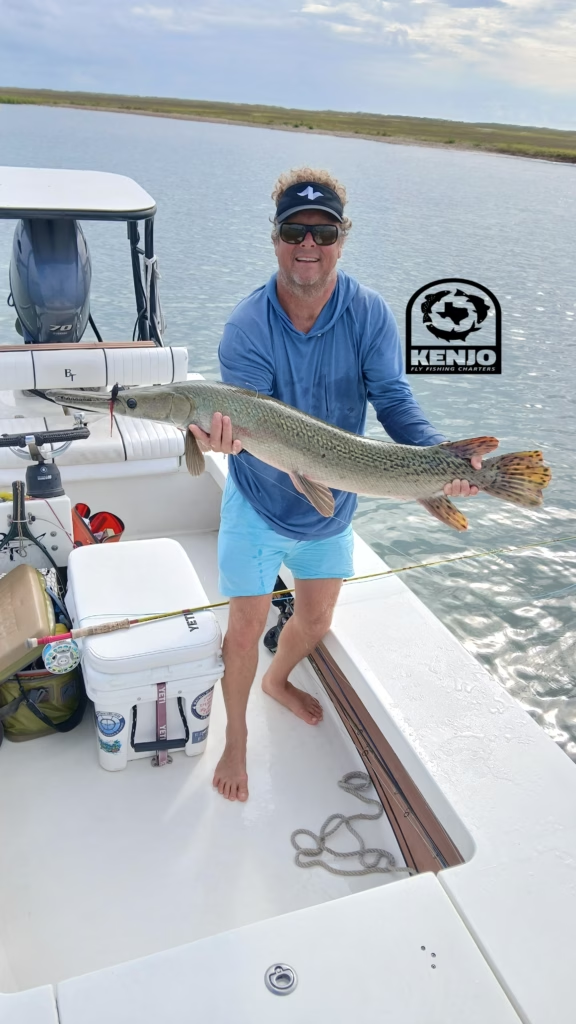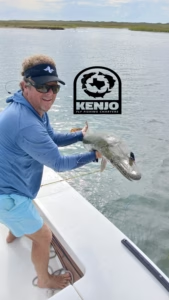Average size baits in the 1-3 inch range seem to be prolific most of the year. But quite a few large gamefish can be caught using effective big fly techniques when larger predator and bigger baitfish are present. That is when a saltwater fly fishing trip can become a big fly combat mission. Line control during casting is the most critical key in success and it will most certainly get your heart beating when a huge predatory fish lunges out of the darkness and swallows your 7-9 inch fly in plain sight!
One can dredge deep water to fish these seriously big flies on weighted fly lines. This is where the fly and line are simply laid in the water (not really cast) and allowed to sink as the boat drifts away. Unless your marking fish on your sonar down deep, this technique isn’t too productive
What can be more exciting though is hold a hand cannon while locked and loaded with a 7 inch half chicken on the end. It can be rewarding if you have the patience to not cast blind. Waiting for that big fish to reveal itself and firing off a clean and accurate shot instantly before the submarine fish disappears from sight is the challenge.
The other big fly combat mission technique which I call the “rifling method” incorporates more of an extended & intense workout. It is a seriously active technique in fly fishing, which requires a good strong casting style, a mean double-haul and an ability to maintain line control in a way which has the fly line land straight with line tight.
This is necessary because this technique draws instinctual bites from huge predatory fish and they will move on it within the first 15 seconds the fly hits the water and explains why it is necessary to have the fly moving back toward yourself on the first strip.
The difficulty is solved by making the cast complete in less than 6 strokes of the rod. You will eventually make these casts with proper instruction and practice. Then, distance wont be a problem with these lines as long as line control is maintained. Casting parallel or at slight angles to these ledges and breaks in terrain is the key.
Big fish regularly prowl the deep & dark edges along shallow sandbars and other hard breaks along underwater terrain. It is on these second and third points of an estuary where large baitfish are ambushed violently.
Sitting in deep water close to a vertical shoreline with a steep slope is a good place to start. It is important to find one that flattens out on the top edge to hold a few feet of water. This is a perfect location for big fish to lurk in the dark shadows down below. Looking up onto the edge of a carving shelf it will strike when it sees helpless baitfish struggling. It then heads back to the deep to reposition its food for better swallowing.
Deploying these tactics can bring a huge rush of adrenaline. It is certainly exciting in locations where big fish roam the oceans, gulfs, bays and estuaries frequently. Give it a try next time the variables are right (location/large forage present). Let me know how it turns out! I can think of a many species where this combat technique would produce. It is possible to gain large results throughout the seasons! Give it a whirl and worst case there is nothing wrong with a little strength training!


